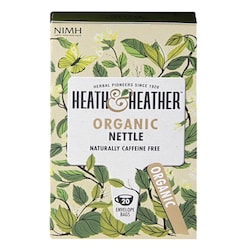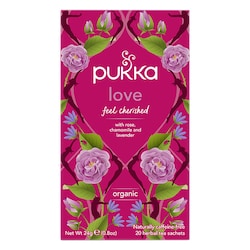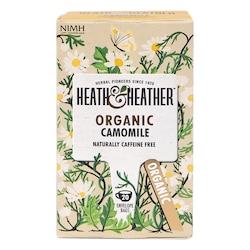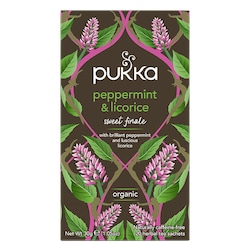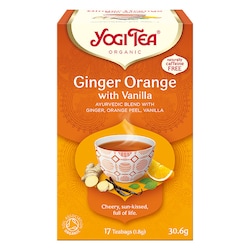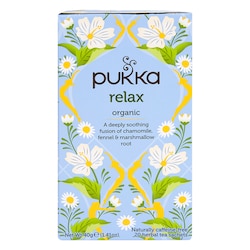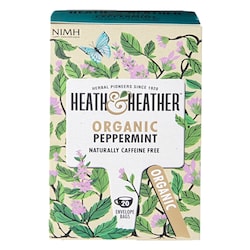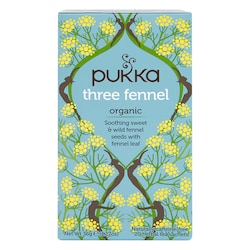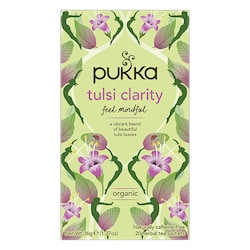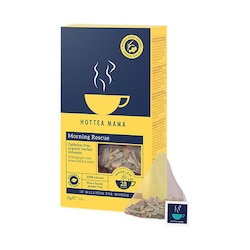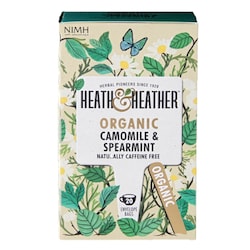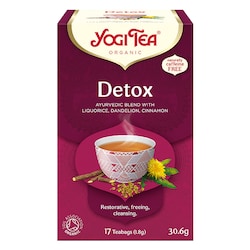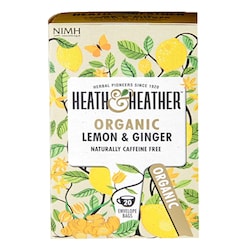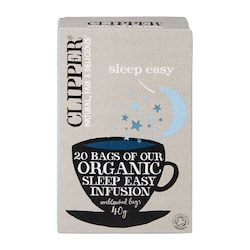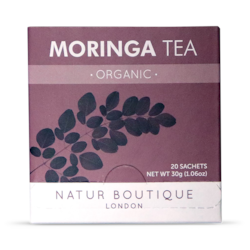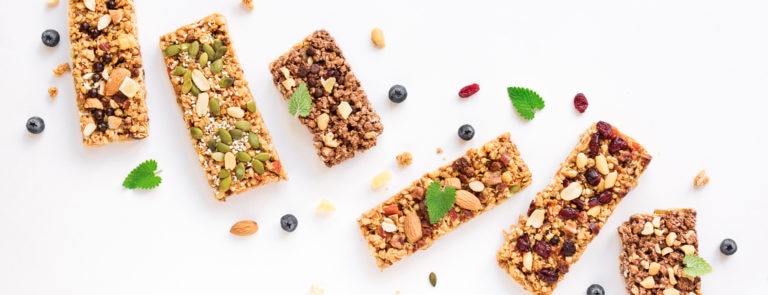20% off £30
Your guide to yerba mate
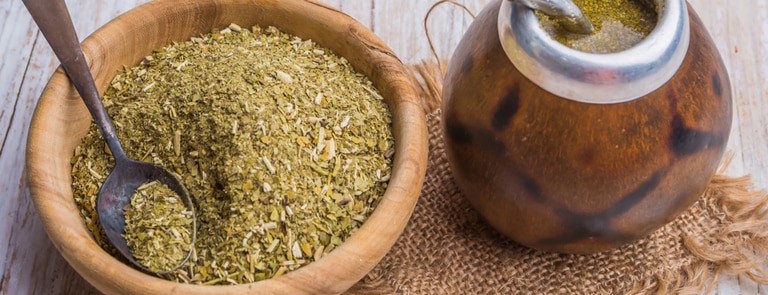
Yerba mate is hugely popular in its native South America, where – in many countries – a pungent tea made from the plant’s dried leaves is considered the national drink.
The UK has a much shorter history with yerba mate, so you’d be forgiven for never having heard of it. However, thanks to yerba mate tea’s reputation as an antioxidant-packed, jitter-free alternative to coffee and tea, it’s gaining in popularity here, too.
Here we’ll explain what yerba mate is, what its used for, as well as the health benefits, dosage and possible side effects.
What is yerba mate?
Yerba mate – also known as Ilex paraguariensis – is a type of plant species native to the South American continent.
A relative of holly, the yerba mate plant has been used by humans in some form for around 3000 years.
The Guarani people, indigenous to what is now Paraguay, are credited with developing the method of making yerba mate tea.1
Today, yerba mate tea is enjoyed across South America, particularly in Paraguay, Uruguay, Argentina, Brazil as well as in Syria and parts of Lebanon.2 Yerba mate tea is by far the most common way the yerba mate plant is consumed, with millions of people enjoying a cup (or several) every day.
How much caffeine in yerba mate?
Yerba mate contains a good amount of natural caffeine – a 250ml serving packs 42.3mg caffeine.3
By way of comparison, a cup of coffee has 172.2mg per 250ml cup, whereas a 250ml serving of black tea contains 44.4mg.
Green tea comes in at 19mg caffeine per 250ml cup.
Uses of yerba mate
-
As a tea
The hugely popular yerba mate tea is made from the dried and roasted leaves of the yerba mate plant.
Yerba mate tea is traditionally drunk from the hollowed-out shell of a fruit known as a gourd. These days, yerba mate tea is usually made and served in wooden, ceramic, stainless steel or even silicone gourd-shaped vessels – a nod to tradition while offering enhanced functionality.
Yerba mate gourd tea is traditionally sipped through a bombilla – a metal straw/ filter which stops the twigs and leaves getting in your mouth as you drink.
Yerba mate tea isn’t a quick cuppa – it’s meant to be periodically topped up with hot water sipped over the course of several hours.
-
As a cold drink
Sometimes, yerba mate tea is served cold as a refreshing alternative to the hot beverage. Cold brewed yerba mate served in a jug with ice cubes is especially refreshing during hot weather.
When prepared like this, this yerba mate drink is known as tereré.
-
As a health supplement
Yerba mate plant extracts are included in various weight-loss supplements currently on the market. This includes weight loss teas and detox tea blends.
It’s thought that the yerba mate plant may have fat-burning properties (more on this below) – making it of interest to dieters.
-
In an energy drink
You will find yerba mate extract as an ingredient in some energy drinks.
This is because the potent plant offers a caffeine boost, which many people prefer as an alternative to chemical-heavy energy drinks.
Is yerba mate a drug?
No – although it contains caffeine, which is a stimulant. According to research, caffeine produces behavioural and physiological effects similar to those produced by drugs of dependence.4
Summary
- Yerba mate is a potent South American plant widely enjoyed as a tea
- It has less caffeine than coffee, and around the same amount as black tea
- It’s also added to health supplements and energy drinks
9 yerba mate benefits
-
Weight loss
Yerba mate can help you lose body fat. This has been proven in several clinical studies.
One study found that after 12 weeks of yerba mate supplementation totalling 3g per day, participants saw a significant reduction in body fat mass and waist-hip ratio.8
This remarkable weight-loss effect is thought to be down to the polyphenols (specifically chlorogenic acids) which yerba mate contains.
Another study examined the effects of yerba mate capsules on weight loss. Participants took 2.3g yerba mate each day in conjunction with exercise. This enhanced the body’s fatty acid oxidation – which is a key factor in weight loss – as well as causing improved feelings of satiety (fullness) thus reducing the desire to overeat.9
What’s more, yerba mate is also thought to help support your metabolism – which is the amount of calories you’re able to burn at rest.10
-
Anti-microbial
Yerba mate tea has proven anti-microbial properties.
Studies have found that the yerba mate plant acts as an anti-microbial agent against harmful pathogens such as salmonella and listeria. This is down to the bioactive phenolic compounds it contains.11
-
Anti-fungal
When used topically on the skin, yerba mate demonstrates impressive anti-fungal benefits.
A type of fungus called malassezia furfur, which causes skin problems such as dandruff and seborrheic dermatitis, can be effectively inhibited with the application of a liquid containing yerba mate.12
This works comparably with the leading drugs available, with yerba mate having fewer risks and side-effects while being more inexpensive.
-
Improve sports performance
Yerba mate contains caffeine, which is associated with a modest boost in endurance when taken before physical exercise.13
Beyond the caffeine benefits, though, yerba mate itself has shown promising effects in sports nutrition. Yerba mate has been shown to increase fat utilisation during exercise – which means your body burns some fat as fuel during exercise rather than relying completely on glucose from carbohydrates.14
-
Beats mental fatigue
Considering it’s a caffeinated beverage, it should come as no surprise that yerba mate tea can reduce mental fatigue and promote alertness.
Beyond the boost of caffeine, though, yerba mate may improve mental clarity and cognitive performance.15
Yerba mate is thought to offer steady mental energy without the jittery effect of too much coffee. The exact mechanism behind this effect isn’t definitively known, although it’s thought to be down to the actions of the two stimulants present in yerba mate besides caffeine – theobromine and theophylline.16
-
Lower cholesterol
Yerba mate teas are able to lower levels of LDL (‘bad’) cholesterol in people with elevated levels.
One study followed 102 people who were on conventional statin treatment, also taking 330ml of yerba mate drink three times daily for 40 days. By the end of the 40 day period, their levels of LDL cholesterol had reduced by an impressive 8.7%.17
-
Antioxidant
Antioxidants are substances which help protect cells from free radical damage. Free radicals are molecules which can cause diseases and premature ageing.
Yerba mate tea has more antioxidants than green tea.
This high antioxidant capacity is attributed to yerba mate tea’s high polyphenol concentration, especially in the form of caffeoyl derivatives.18
-
Maintain normal blood sugar
Yerba mate may be able to help with maintaining normal blood sugars. High blood sugar is a risk factor for type II diabetes.
One study on 29 patients with type II diabetes and 29 with pre-diabetes found that levels of fasting blood glucose decreased significantly in those who were drinking yerba mate tea. They drank 330ml every day, three times per day for 60 days.19
-
Anti-inflammatory
Chronic inflammation in the body is a leading cause of many different diseases.20 As a result, anti-inflammatories such as yerba mate are of great interest to researchers.
It’s thought that the anti-inflammatory properties of yerba mate are thanks to the plant flavonoids and saponins it contains.21
What does yerba mate tea taste like?
Yerba mate tea has a unique taste – you really have to try it to understand!
It’s been described as tasting distinctly but pleasantly bitter, roasted and smoky.
Summary
- Yerba mate has proven weight-loss benefits, and can help lower cholesterol and normalise blood sugar
- It acts as an anti-microbial, anti-fungal and anti-inflammatory
- It could give you the edge in both athletic and cognitive performance
How to make yerba mate tea
-
The traditional way
This isn’t a speedy process, but the mindful ritual of preparing yerba mate tea like this is steeped in tradition.
- Take a gourd-shaped vessel and fill around ½ to 2/3 full of yerba mate tea.
- Cover the opening of the vessel with your hand and shake it, to bring the stems and leaves to the top. This stops the bombilla getting clogged as you drink.
- Tilt your vessel so the yerba mate gathers against one side.
- Add a dash of room temperature water into the hollow at the empty side of the vessel and leave for two minutes. This helps protect the leaves from the hot water, which if too hot may destroy the health benefits.
- Add the bombilla into the hollow so it’s resting on the bottom on the vessel.
- Then add hot (not boiling) water to the empty side of the vessel. The top of the mate stack should be dry.
- It’s ready! Never stir with the bombilla – this will clog its filter.
- Sip slowly – this is a drink to be savoured.
- Keep topping it up with boiled water throughout the day.
Yerba mate tea is traditionally shared among friends and loved ones – but to avoid sharing germs too we’d recommend sticking with your own!
-
The French press method
After reaching Europe, yerba mate tea has been adapted to the apparatus at hand. This means you can brew yerba mate tea in a French press coffee maker similar to how you would with ground coffee.
- Remove the filter and plunger and add tablespoons of yerba mate.
- Add a dash of room temperature water to coat the tea.
- Pour hot (not boiling) water over the tea.
- Leave for around three minutes.
- Return the filter to the French press and plunge.
- Drink yerba mate from a cup of your choice – no bombilla required!
- Add sugar, honey, agave, or sweetener if you find the taste a little bitter on its own.
-
With teabags
The simplest way to try yerba mate tea – perfect for beginners.
- Place a yerba mate teabag in your mug of choice.
- Pour a dash of room temperature water over the bag and leave for a minute or two.
- Then poor hot (not boiling) water over the bag.
- Leave to steep for around five minutes.
- Remove the bags and enjoy!
- Add sugar, honey, agave, or sweetener if desired.
- For an ice alterative (tereré), brew the yerba mate tea as above, allow to cool and serve over ice.
Dosage
There is no medically advised dose of yerba mate tea.
Studies of its efficacy often use higher doses, such as 3g per day of dry extract, or 990ml per day yerba mate infusion.
Possible side effects
Some people might experience diarrhoea, nausea or an upset stomach when taking yerba mate.
Further, the yerba mate caffeine content can cause restlessness, anxiety, insomnia and increased heart rate.22 This is especially true if you keep refilling your yerba mate vessel all day as is traditional.
Some studies have found a link between drinking large amounts of yerba mate tea at high temperatures, and some types of cancer. This research is far from definitive – and it is thought that factors such as tobacco use, alcohol consumption and poor oral hygiene in areas where yerba mate consumption is at its highest play a role in this link.23,24
A 2010 study examined the possibility of fungal diseases being carried in dried yerba mate.25
Despite yerba mate displaying anti-fungal properties against some types of fungus, seven out of the eight Brazilian samples tested showed fungal growth. This could be a risk for immunocompromised people.
Is yerba mate suitable for everyone?
Yerba mate is not suitable during pregnancy or breastfeeding.
Children should not be given yerba mate due to its relatively high caffeine content.
Further, it’s not recommended while taking certain medications, including heart, thyroid and blood pressure medication.26
Is it safe to drink yerba mate every day?
Yerba mate has been consumed by humans every day across the world without any common adverse effects being reported.
The studies relating to certain types of cancer are based on drinking a large quantity of yerba mate tea daily, and could be influenced by other factors in yerba mate-drinking populations, such as smoking, alcohol, nutritional factors and poor oral hygiene.
If you’re sensitive to caffeine, go easy on the quantities.
Summary
- Yerba mate tea can be made traditionally in a gourd, in a French press or with teabags
- Side effects can include gastrointestinal upset, anxiety and insomnia
- Some studies have linked excessive yerba mate tea consumption to some cancers, although research isn’t conclusive
- Don’t take yerba mate while pregnant, breastfeeding or on some medications
Last updated: 16 June 2021
- https://www.taragui.com/en-gb/discover/history-engb/history-of-mate
- https://www.britannica.com/topic/mate-beverage
- https://www.caffeineinformer.com/caffeine-content/yerba-mate
- https://www.ncbi.nlm.nih.gov/pmc/articles/PMC3777290/
- https://onlinelibrary.wiley.com/doi/full/10.1111/j.1750-3841.2007.00535.x
- https://www.sciencedirect.com/topics/agricultural-and-biological-sciences/yerba-mate
- https://www.sciencedirect.com/topics/agricultural-and-biological-sciences/yerba-mate
- https://www.ncbi.nlm.nih.gov/pmc/articles/PMC4583719/
- https://www.ncbi.nlm.nih.gov/pmc/articles/PMC5579675/
- https://nutritionandmetabolism.biomedcentral.com/articles/10.1186/1743-7075-11-42
- https://www.sciencedirect.com/science/article/pii/S0325754113700063
- https://www.researchgate.net/publication/26892613
- https://www.ncbi.nlm.nih.gov/pmc/articles/PMC4213371/
- https://pubmed.ncbi.nlm.nih.gov/29117073/
- https://www.sciencedirect.com/science/article/abs/pii/S0378874108005138
- https://yerbamateculture.com/yerba-mate-and-brain/
- https://pubmed.ncbi.nlm.nih.gov/19694438/
- https://onlinelibrary.wiley.com/doi/full/10.1111/j.1750-3841.2007.00535.x
- https://www.researchgate.net/publication/51796630
- https://www.ncbi.nlm.nih.gov/books/NBK493173/
- https://pubmed.ncbi.nlm.nih.gov/19807157/
- https://www.ncbi.nlm.nih.gov/pmc/articles/PMC5445139/
- https://pubmed.ncbi.nlm.nih.gov/19695149/
- https://onlinelibrary.wiley.com/doi/full/10.1111/j.1750-3841.2007.00535.x
- https://pubmed.ncbi.nlm.nih.gov/20659310/
- https://www.ncbi.nlm.nih.gov/pmc/articles/PMC5579675/


